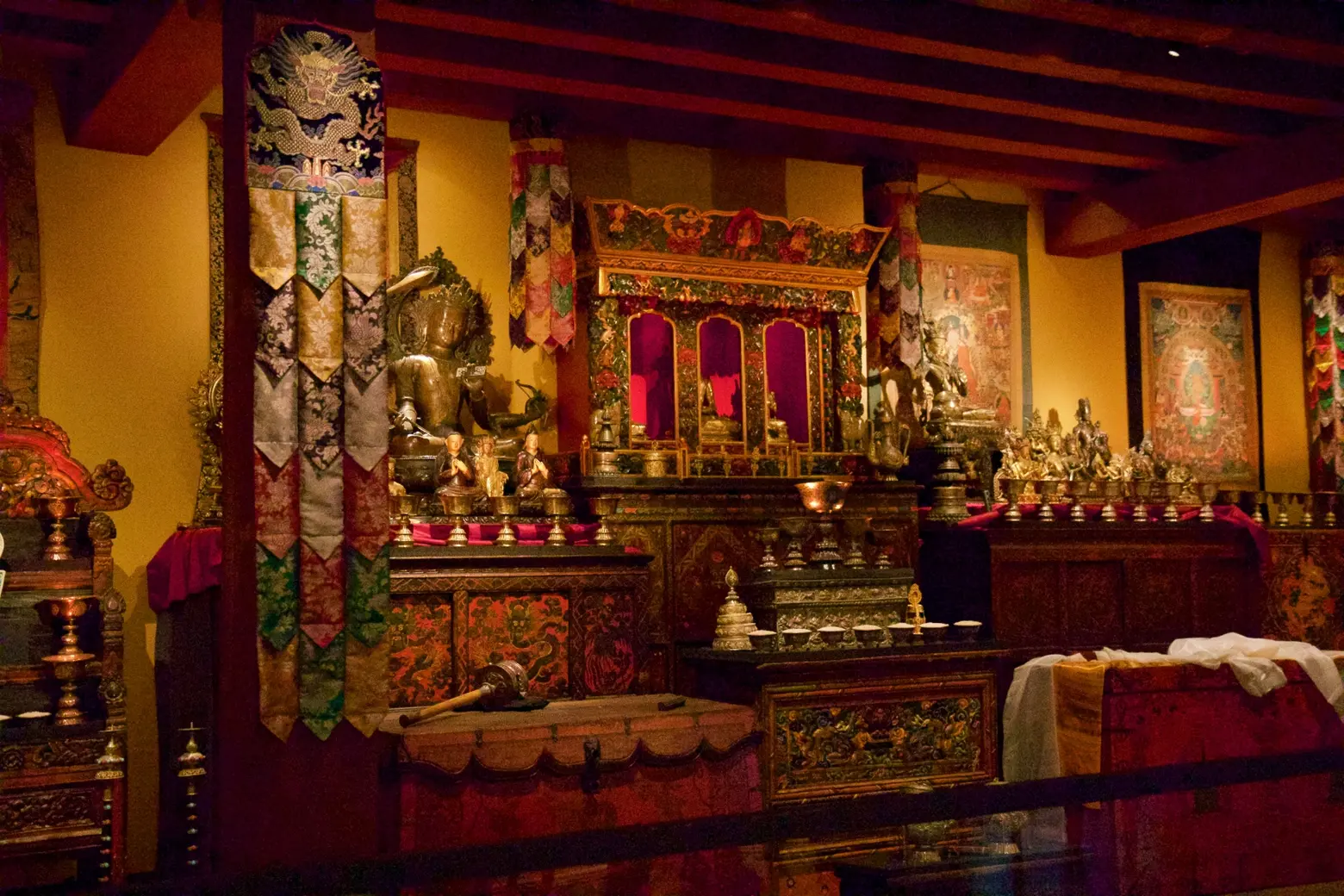The Rubin’s Tibetan shrine room finds new home at the Brooklyn Museum


Rubin Museum Tibetan Buddhist Shrine Room. Photo via WikiCommons
After closing its Chelsea home last fall, where it had operated for 20 years, the Rubin Museum is relocating one of its most beloved installations to the Brooklyn Museum. Opening on June 11 in a custom-designed space within the museum’s Arts of Asia galleries, the Tibetan Buddhist Shrine Room features over 100 artworks and ritual objects from the Rubin’s collection, presented as they would be in a private household shrine. The installation will be on view for six years, with rotating objects highlighting different Tibetan traditions.
The Tibetan Buddhist Shrine Room was one of the most popular exhibits at the museum’s former home on 17th Street; according to the Rubin, more than one million people visited from the year it opened in 2015 through the building’s closure last year.
The space presents artworks and artifacts within an immersive setting that reflects traditional Tibetan architecture and color schemes.
At the Rubin, the shrine room rotated every two years to feature one of the four major Tibetan religious traditions: Nyingma, Kagyü, Sakya, and Gelug. Continuing on that approach, Rubin curators will cycle objects at the Brooklyn Museum to spotlight specific traditions and provide cultural context and scholarship for the works on view.
The installation features thangka paintings, sculptures, ritual objects, and musical instruments, all arranged on traditional Tibetan furniture according to the hierarchical order observed in Tibetan Buddhist practice.
Objects such as vajras and bells, offering bowls, pitchers, ritual mandalas, and handheld instruments like drums, conch trumpets, horns, and reeds are used in daily rituals and offerings. Ornamental textiles made of brocade silk, crafted by master artisans, hang from the ceiling and pillars, playing a vital role in the shrine room’s adornment.
The shrine room also features simulated flickering butter lamps, recordings of Tibetan monks and nuns chanting prayers, and the smell of incense, which is used during religious practices.
The opening marks the Rubin’s foray into its new status as a global museum “without walls.” Widely acclaimed for its collection of Himalayan art, the museum opened in 2004 and showcased the art collection of Donald and Shelley Rubin, featuring almost 4,000 Himalayan art pieces spanning 1,500 years of history.
The addition of the shrine room further enhances the Brooklyn Museum’s Asian art collections, which underwent a full reimagination unveiled in phases between 2017 and 2023.
One of the city’s only Asian art museums, the institution’s Chelsea location spanned roughly 70,000 square feet inside what was a former Barneys New York fashion department store. The Rubin family purchased the building in 1998 for $22 million, as 6sqft previously reported.
In February 2024, the museum announced it would close its doors after two decades, instead becoming an organization that processes long-term loans, hosts traveling exhibitions, and helps with research inquiries and fundraising.
Access to the shrine room is included with the Brooklyn Museum’s pay-what-you-wish general admission.
“We are thrilled that our beloved Shrine Room will remain accessible to the public in New York in the coming years and are grateful to the Brooklyn Museum for embracing this unique presentation,” Jorrit Britschgi, Executive Director of the Rubin Museum of Himalayan Art, said.
“A core part of our mission as a global museum is to share our collection and curatorial resources to help increase the representation and appreciation of Himalayan art in institutional settings of all types, from universities to fine art museums. The Shrine Room will now exist in dialogue with Brooklyn’s fantastic Arts of Asia galleries and give visitors the opportunity to experience Tibetan religious art in its cultural context.”
RELATED:
Get Insider Updates with Our Newsletter!
Source link
